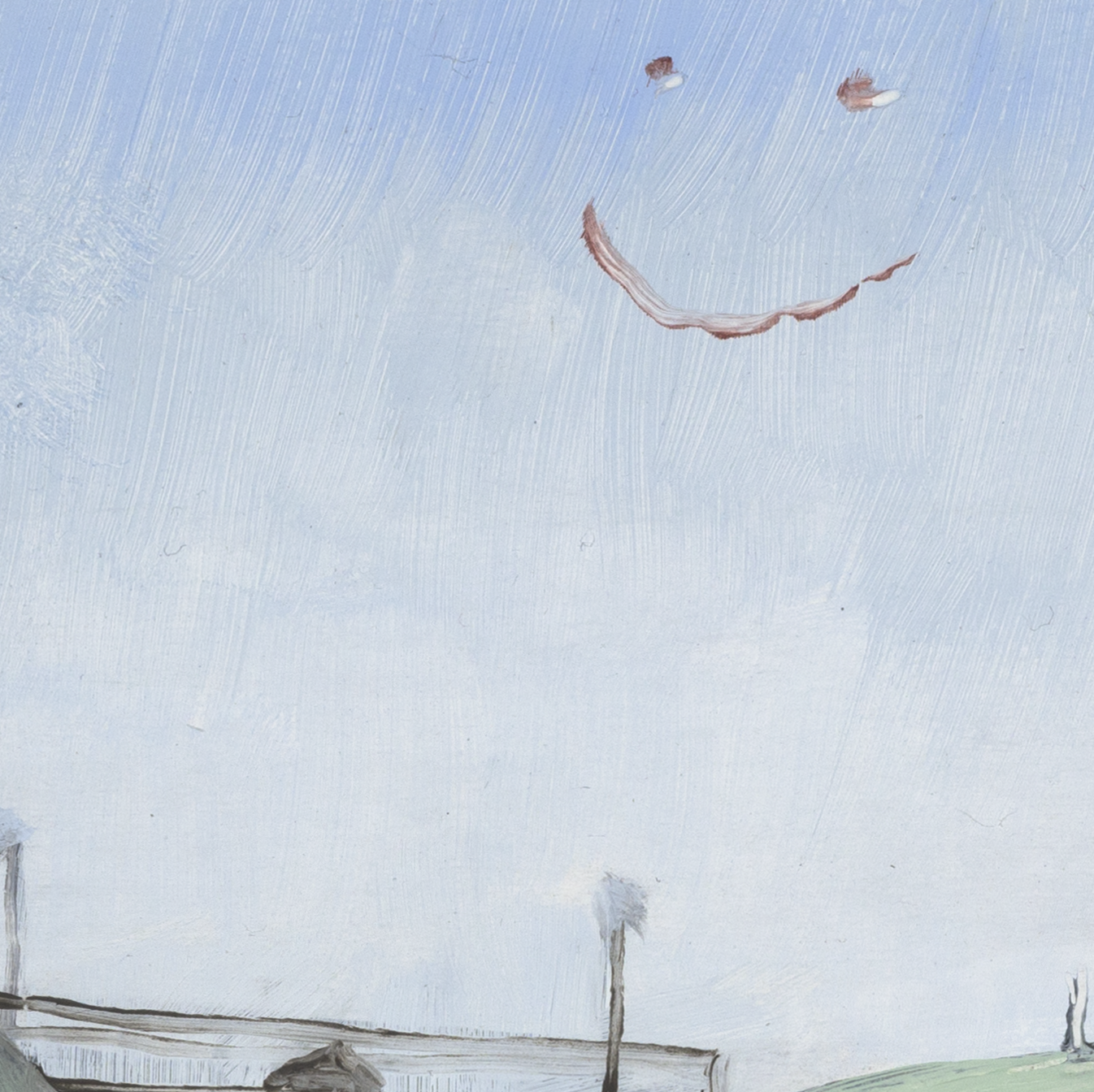What kind of art do you make?
I make still life and landscape paintings. They’re real things that aren’t really happening. I paint nature even though I don’t believe in nature.
How’s that?
Nature is a stupid word. I use it all the time but I don’t like it. It’s a term we use to label something as non-human but the more we learn about the world the more reason we have to question the traditional view of ourselves as uniquely separate from it. Creating a boundary between us and everything else is an illusion and I think a dangerous one.
What do the eyeballs mean?
A few things:
It’s a gimmick.
It’s an attempt to tell myself stories even I haven’t heard before.
It’s based on a superstitious constraint that prevents me from painting human beings. As if taking objects seriously means:
it’s not okay to make paintings of people because to do so is to turn a human being into an object.
It’s dumb but it feels right.
It makes room for non-human characters to appear, characters towards whom I sometimes feel surprisingly tender.
It’s a way to create a focal point within a composition.
It’s like hacking anthropomorphism. Thinking hard about how it feels to be an object can open you up to the part of yourself that exists outside the limits of time and space and, if you do it right, can catapault you back into your body and make you feel more human and more present.
The eyeballs and whatnot are a representation of “nature” (or maybe “super-nature”). When I’m working I try to concentrate as much as possible on material and physical stuff: light, gravity, etc…In general I’m rather a skeptical person. I am skeptical of God, ghosts, spirits, souls etc. and I’m very interested in putting ideas from science in my art, especially physics. And yet…descriptions fail. And yet…there’s always uncertainty. We know a lot more about the universe than our ancestors did but there’s still so much we don’t understand. If you look at anything closely enough it stops being a thing and becomes a state, a situation. To do so is to encounter a gap, a pore of possibility. I mean the eyeballs and “haunted” imagery evoke that gap: between reality and representation, between matter and thought, even between matter and itself. They represent moments of potential, as if for only a split second (and only when our backs are turned) the world turns upside down and anything is possible.
You said before that using the word nature is a “dangerous delusion” but here you seem to be actively trying to fool yourself for the purpose of making art.
I think everyone has to decide for themselves. That’s what we always do anyway.
Decide what?
Decide by itself is not quite the right word. There are some things we decide for ourselves (I like/dislike this painting. It means this or that) and some things that, whether we realize it or not, get decided for us (I recognize that black shape as a witch hat because of previously formed associations because of the culture I am from/I do not recognize that black shape). This is true no less in life than in art.
How do you decide what to paint?
Sometimes I look for what to paint and other times it looks for me. Sometimes, often first thing in the morning, I get a flash in my mind’s eye and I can suddenly see what’s next. Or, at the auspicious moment, I simply look around at whatever junk’s laying around the studio. Recently I’ve been making things up more and more as opposed to setting up scenes in my basement and painting them from life.
Where do you live and work?
Ocean Hill, Brooklyn.
Why is there so much trash and garbage?
There’s a wonderful image I first got in my head when I read Caetano Veloso’s book Tropical Truth many years ago: culture itself as a big trash heap with layers and layers of junk piled on top of each other, intermingling, stuff staining other stuff, bits poking out, all of it determining the topography for everything deposited later. It’s like a metaphor that describes itself. I’d like to dissolve the distinction between the thing being rendered and the rendering. The act of littering in the world and “littering” oil paint on a painting become the same thing.
Are there any pithy quotations that might describe your practice?
“I fooled myself every time, because at such moments part of me became clever and the other part stupid, just as much as was necessary.” - Lydia Davis, The End of the Story
Also this one - “The poems of mine that I consider successful are the ones where some part of me seems to have dared another part to do something that, if I were fully aware of it, I’d never do…” - Carl Phillips, The Art of Daring
There are often objects leaning or floating. What do they mean?
They’re about art as it exists outside of time. The eternal instant - the lovers on Keats’s Grecian urn stay beautiful forever but never embrace - art’s ability to subvert time but also to register it.
A lot of the paintings were different sizes than I expected.
Yeah. I try to listen to each painting and let it tell me what it wants to be. I really just want people to see them in person. I don’t have the titles and sizes on this website because I dislike mixing up the images with a bunch of words. I apologize even though it’s the internet’s fault not mine.
Do you sell your work?
Sure, sometimes. Email me: rhysziemba@gmail.com and come visit my studio if you like.





